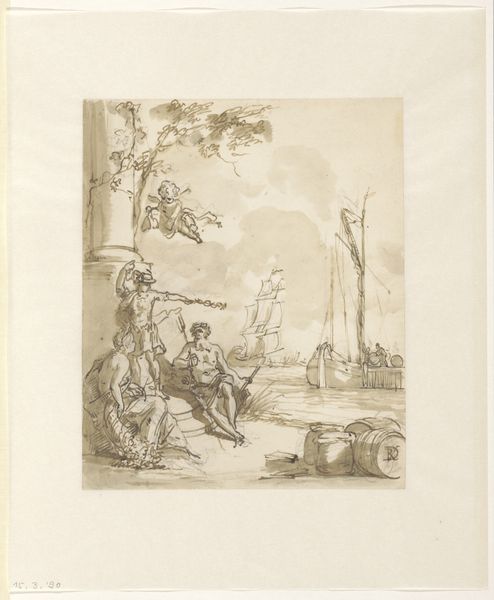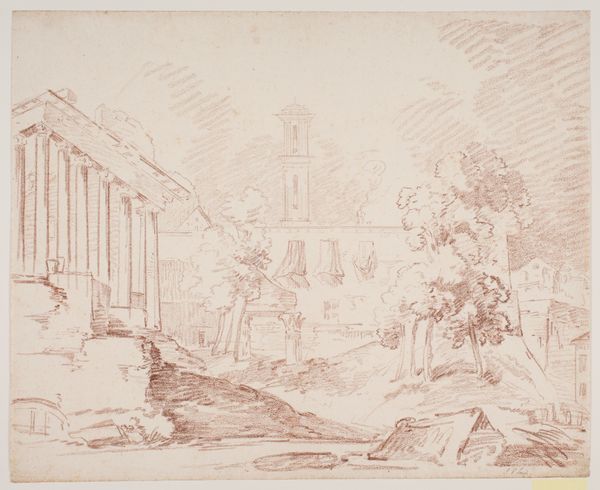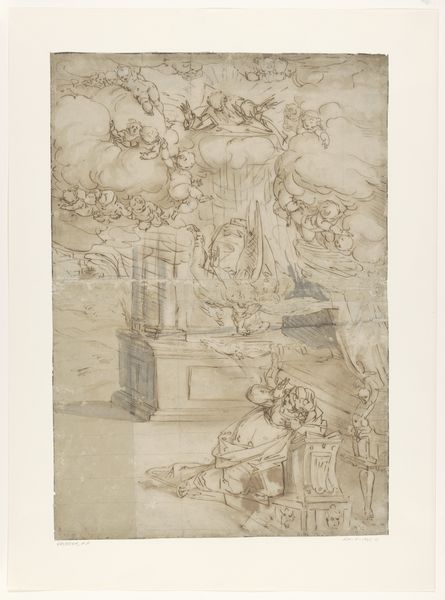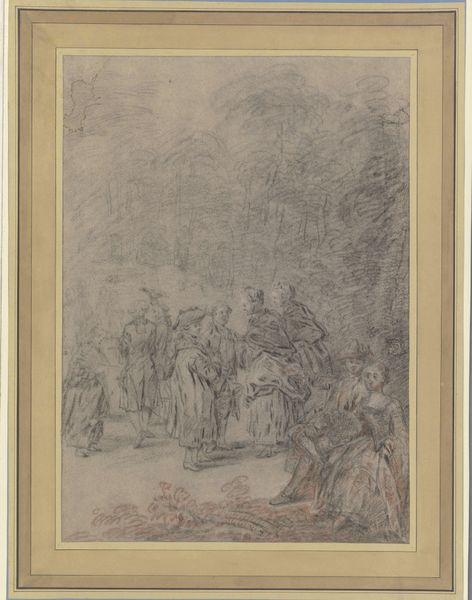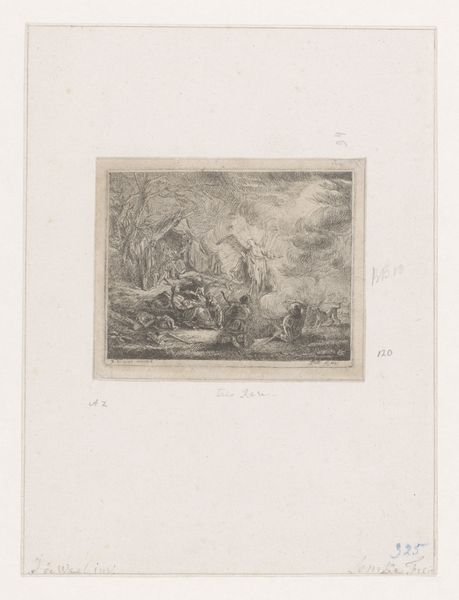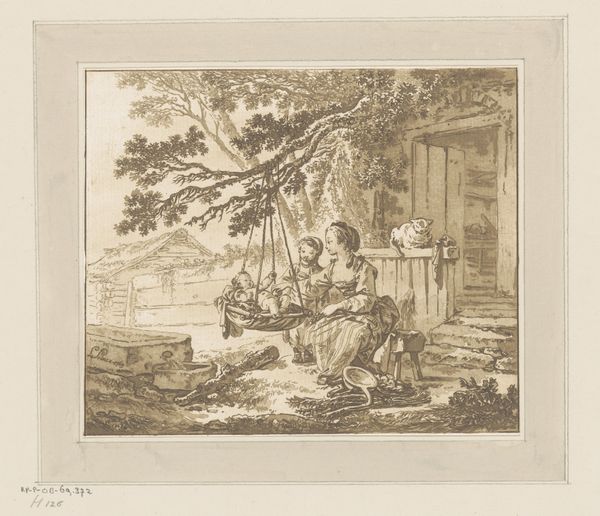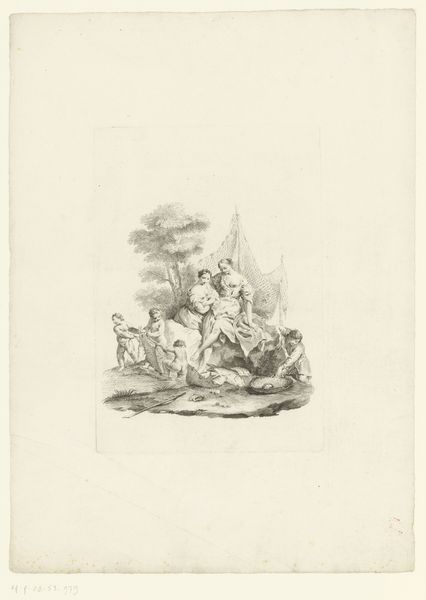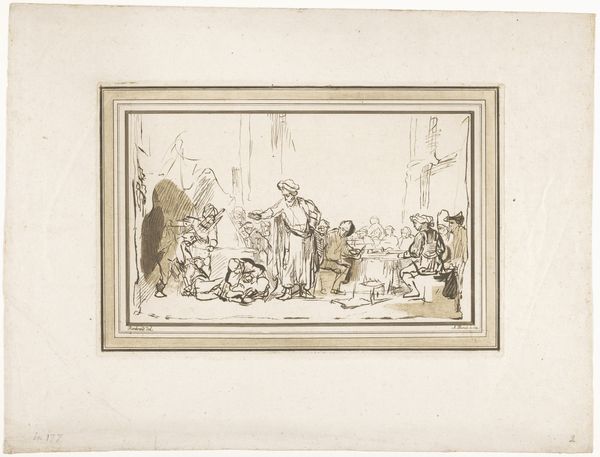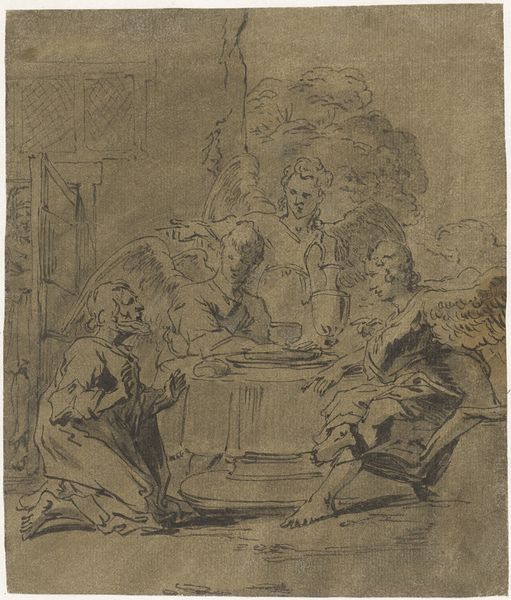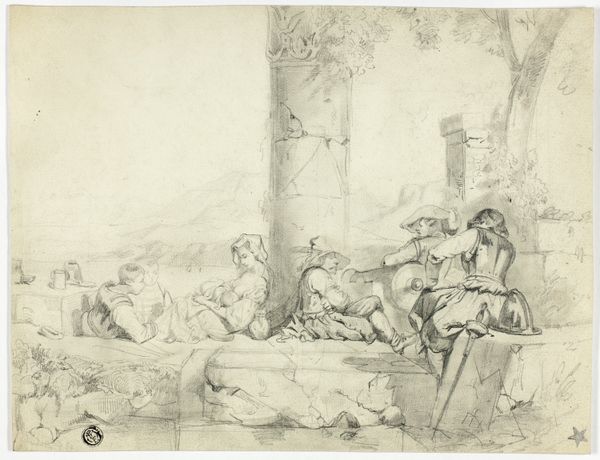
Allegorie sur l'Erection de la Statue de Louis XV (Allegory on the Establishment of a c. 1763
0:00
0:00
drawing, print, etching, paper, ink
#
drawing
#
allegory
#
narrative-art
# print
#
etching
#
etching
#
paper
#
form
#
ink
#
classicism
#
line
#
history-painting
#
academic-art
Copyright: National Gallery of Art: CC0 1.0
Editor: This is Gabriel de Saint-Aubin’s "Allegory on the Establishment of a Statue of Louis XV," created around 1763. It looks like an etching, maybe with ink, on paper. It's quite faint, and the subject matter seems very formal, almost staged. What am I looking at, exactly? Curator: You've observed the key elements. The work, celebrating the public installation of a Louis XV statue, provides a window into the construction of royal imagery. Saint-Aubin, though known for his detailed renderings of Parisian life, uses allegory here, placing the statue within a theatrical space. Editor: The theatricality stands out. It feels more like a stage design than a historical record. Was the event itself staged, or is this artistic license? Curator: Think about the role of public monuments. They aren’t merely commemorative, they are performances of power. Artists, and their patrons, use symbols to amplify specific narratives, often aligning the monarch with classical virtues or divine right. Note the figures flanking the statue – do you recognise any? Editor: They seem like classical figures...maybe muses? I guess it reinforces the connection between Louis XV and greatness, trying to secure the monarchy's position through art? Curator: Exactly. The monument and Saint-Aubin’s image of it served as tools to shape public opinion and consolidate power, part of a broader cultural project where art reinforced political stability. The relatively sketchy medium, however, also suggests a more immediate engagement with contemporary events, beyond purely propagandistic purposes. Editor: So, the image is both propaganda and a record of the city’s visual culture. I never thought about monuments being such deliberate acts of communication! Curator: Indeed! It’s fascinating how art reflects and shapes society, constantly negotiating power structures through visual language. Editor: This definitely changed my perspective on what a drawing can communicate about its time. Thanks!
Comments
No comments
Be the first to comment and join the conversation on the ultimate creative platform.
